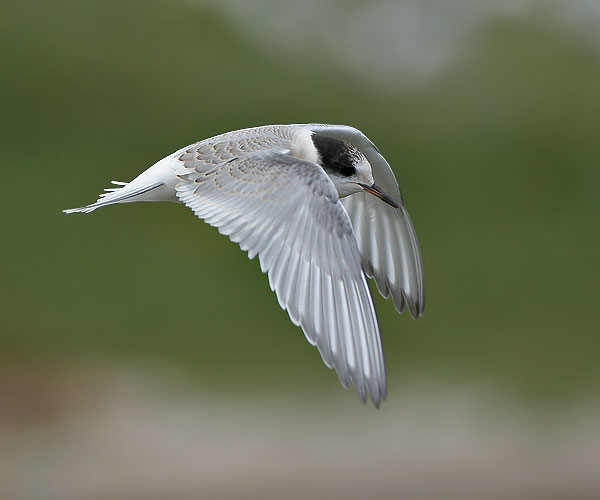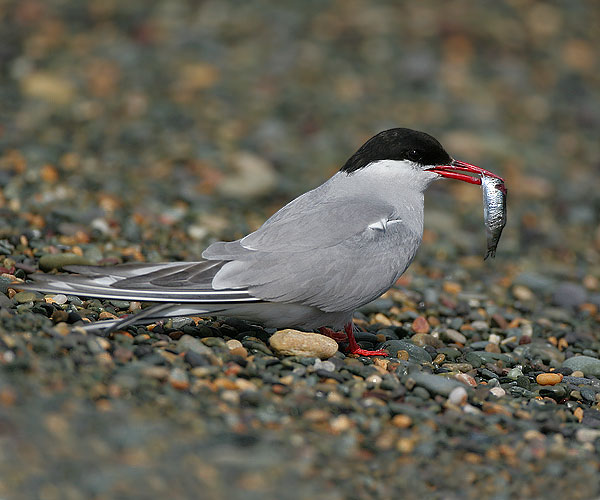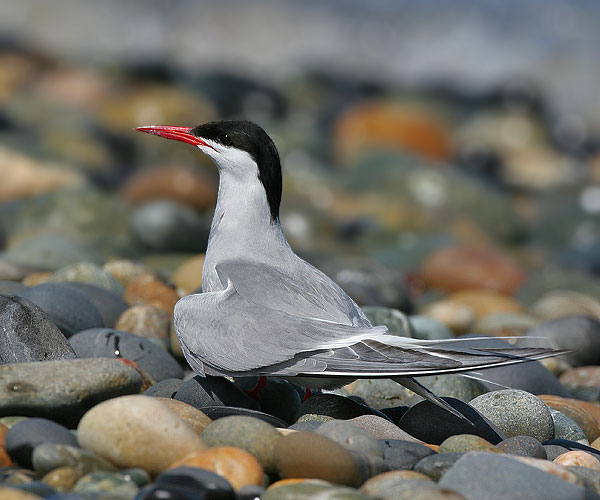ARCTIC TERN MIGRATION
 © Steven Round
Bird Photography 2005
© Steven Round
Bird Photography 2005
THE BIRD
Relative to other birds in its class the Arctic Tern (Sterna paradisaea) is a medium sized bird, about 33-39 cm in body length and has a wingspan of approximately 66-77cm (26-30in). It usually weighs in just under 2lbs.
It is a sea bird from the Tern family of Sternidae, which is a sub family under Laridae. To the casual observer, a white and gray plumage distinguishes the paradisaea from other closely related bird species. The beak is often beet red in color or a dark shade of orange. The feet color match the beak and unlike a lot of other sea birds is not webbed. Physically, what separates this bird from other tern species is the black nape and crown feathers it posses. There are also black markings under each wing.
DIET

© Steven Round
Bird Photography 2005
The main food consumed by the paradisaea are small fish, usually about 150mm long, crustaceans, and insects, both aquatic larvae and adults. Less frequently it consumes other invertebrates. It usually feeds as an individual, however it will readily join flocks of other terns in search of food. Feeding is done on the wing (that is it glides down to the surface of the water and scoops out food from just below the water surface).
HABITAT
Preferable nesting grounds for the Arctic Tern include open and often tree less environments with little vegetation. Their nests often have little or no plant cove. Their nests are frequently constructed on small islands, where the terrain is either rocky, gravelly or grassy.
During its migratory activities, which is the main focus of this website, flocks of paradisaea make frequent stops along coastline areas with high prey populations. It is not known whether they have traditional resting sites along their migratory routes or they simply select a suitable location.
Seyram Ahiadeke Butame - Reed College
Reed College MS1113203 SE Woodstock Blvd,
Portland, OR.
butames@reed.edu
Last Modified December 2006
